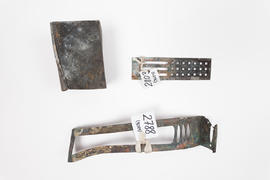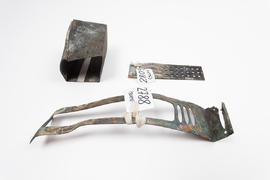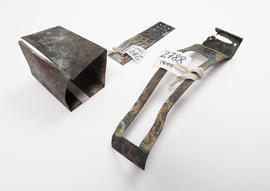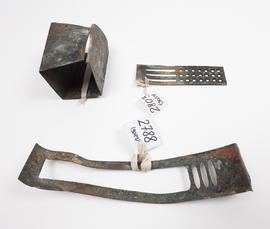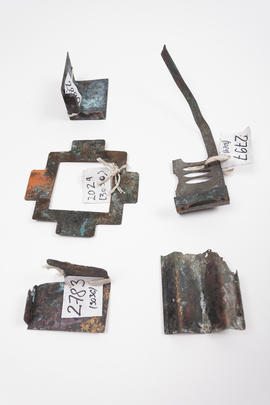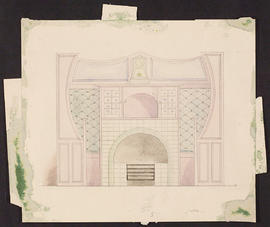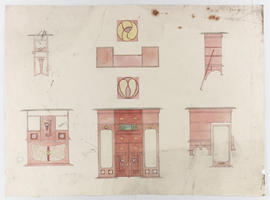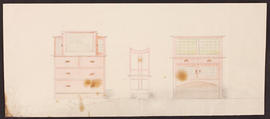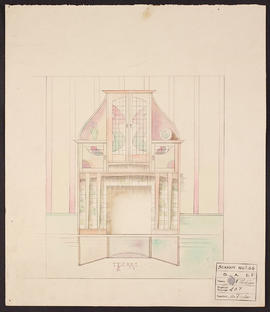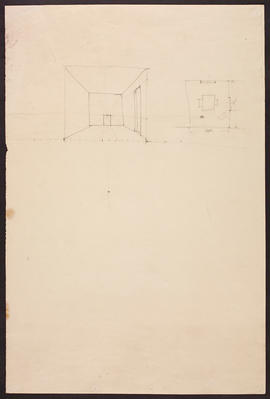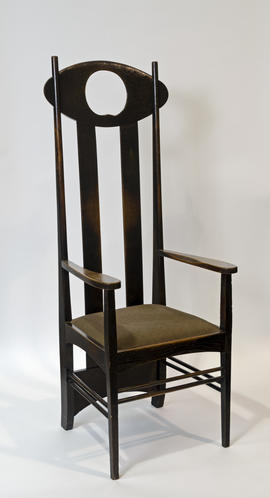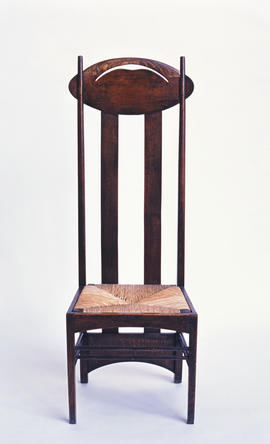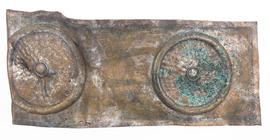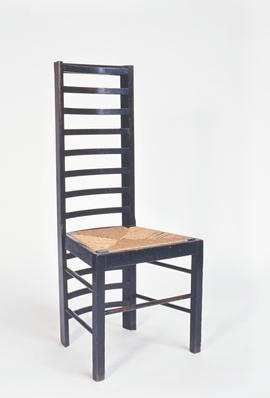Fragments of lampshade(s) for Library, Glasgow School of Art (Version 1)
- MC/F/96ZZ/v1
- Part
- 1907-1909
The library was destroyed by fire on 23 May 2014, though many metal and glass fragments from the lights were subsequently salvaged. Originally, and according to Mackintosh’s preparatory sketches, there were thought to be 53 individual lights in the library, each with punched holes in the inner reflectors which allowed light to pass through blue and purple glass. The central array was made up of 12 small canisters attached to the light frame on the ceiling, with eight medium pendants and five large pendants hanging below. There were an additional twelve medium canisters attached to the coffered ceiling both above and below the library balcony, making 24. Originally there were also four additional medium hanging pendants in each of the south and western window bays, though these four lights, and the medium canister in the librarians office, had all been removed before the fire in 2014, meaning there were 48 in the library. This small selection of salvaged lights fragments has been retained as evidence of the fire tragedy. These fragments are also surplus to the needs of Rodney French of Lonsdale and Dutch, Edinburgh who has been tasked with reconstructing the entire set of library lights, whilst reusing as much of the surviving fragments as possible.

